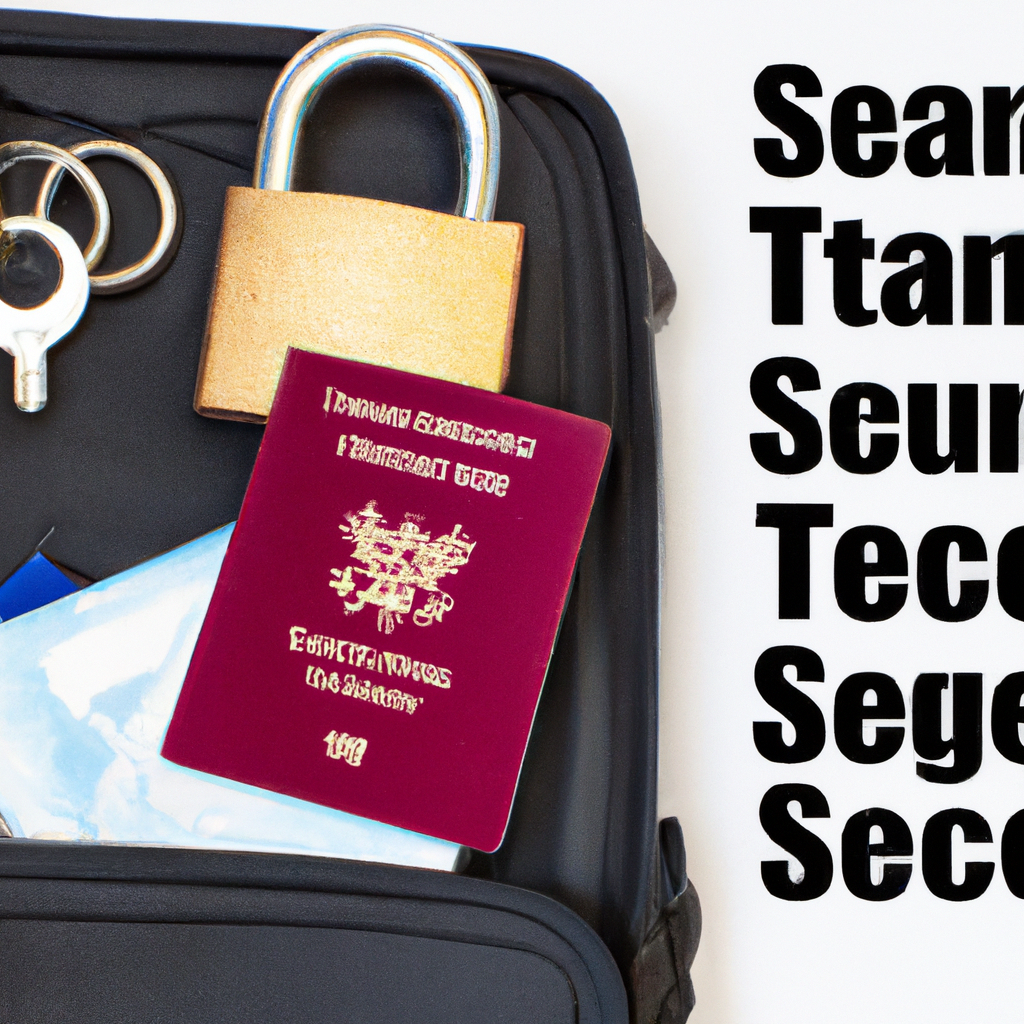Nothing can put a damper on your travels like worrying about your belongings. With the right planning and strategy, you can make sure that your possessions stay safe while you tour the world. In this article, you’ll learn about anti-theft strategies that can help you keep your valuables secure while you’re on the go.
1. Safeguarding Essentials – Anti-Theft Strategies for Travelers
Whenever planning a trip abroad, it’s essential for travelers to take preemptive steps in order to safeguard their belongings. Fortunately, with the right approach, the threat of theft can be effectively minimized. Here are the top anti-theft strategies any traveler should consider:
- Safe Storage: When out and about, opt for secure storage solutions such as a slash-proof bag, which can make it almost impossible for a potential thief to break in.
- Digital Tracking: For greater peace of mind, consider investing in a tracking device that will alert the user if their belongings move outside set parameters.
- Secure Documents: Essential documents such as passports should be kept safe using either a concealed pocket or secure wallet.
- Be Cautious: When it comes to expensive items like jewellery and electronics, make sure to keep them out of sight in well-secured pockets and zips.
By taking the right precautions, travelers can enjoy their trip without worrying about their valuables. It’s also key to keep an eye out for suspicious activity, to stay alert in crowded places and always be aware of your surroundings. Finally, it’s worth investing in travel-specific insurance to provide additional protection in the event of loss or theft.
2. Arm Yourself with Knowledge – Best Practices for Preventing Theft
Being informed and aware is the key to successfully preventing theft. When it comes to shoplifting, proactivity is essential to protecting yourself and your goods. Here are the best practices for thwarting shoplifting.
- Be Visible – Thieves want to be able to take items without being noticed, so make it harder for them by maintaining good visibility of the area. When possible, staff up the store with adequate security personnel. Or if you’re solo, try to maneuver around the area and take note of any suspicious activity.
- Strengthen Security Measures – Thieves look for stores with inadequate security, so outfit your store with modern security systems, surveillance cameras, alarms, and other anti-theft technology as best you can.
- Monitor Store Traffic – Keep an eye out for suspicious customer behavior such as refusing to let you or your employees help them, looking nervous or jumpy, or trying to conceal merchandise.
While prevention is key, it’s a good idea to arm your store with deterrents to deter theft. Utilize technology such as RFID tags, mirrors located in blind spots, and security gates located at store entrances and exits. Additionally, make sure your store is properly signed with anti-theft notices to let customers know you are taking security seriously.
3. Protect Your Goods with Appropriate Equipment
When it comes to protecting your goods, you want to make sure that you have the right equipment for the job. Depending on the nature of the goods that you need to store, there are a number of options available to you:
- Fireproof safes: If you are dealing with items that can be harmed by fire, such as artwork, photographs, or film, you may need to invest in a fireproof safe to safeguard them. This type of safe typically contains heavy walls and insulation and a reinforced door to prevent heat from seeping inside.
- Climate controlled storage solutions: If you need to store items that could be damaged by temperature or humidity, such as furniture or electronics, you may want to look into a climate-controlled storage solution. These systems typically include temperature and humidity monitors that work together to ensure that the stored items remain in a safe environment.
- Padlocks: Padlocks are a great option if you need to store items in a secure location outdoors, such as a bike or a box. Padlocks are typically small and easy to use, and they can be keyed alike so that you can open multiple locked items with one key.
- Security Camera Systems: For larger items or items stored in an area with high traffic, such as in a store or warehouse, you may want to install a security camera system. These systems typically include security cameras, motion sensors, and alarm systems to ensure you can keep an eye on your property day and night.
No matter what type of goods you are storing, it is important to make sure that you have the right equipment to keep them safe and secure. Investing in the right protective equipment will ensure that your goods remain safe and secure for years to come.
4. Take Inventory – Document Your Belongings
Documentation is your best friend. Disasters aside, taking an inventory of your belongings is a great way to keep track of your possessions over time. Whether for insurance, tax, or general organizational purposes, having a comprehensive view of your things can be beneficial.
Creating a list of your belongings gives you an accurate account of everything you own, which you can tally against insurance and tax information throughout the year. Directions for doing so include:
- Make a list of what you have. For larger items like furniture, going room by room is an effective strategy.
- Once you have a comprehensive list, categorize each item as to where you store it.
- Keep track of not only valuable items, but anything else you want to track.
- Take pictures or videos of every room in your home and store them digitally or on a hard drive.
This information can provide peace of mind knowing that everything you own is documented and organized. Additionally, if you find yourself needing to re-home any items, it will be easy to find the item and generate an accurate piece of record-keeping. It’s always better to have the information you need than to not have it should something come up.
5. Rely On Your Instincts When Traveling
When it comes to traveling, relying on your instincts can be the best way to ensure a great experience. There are many things that can come up on any excursion that require quick thinking and insight. Here are five simple suggestions that can help you get the most out of following your instincts while you travel:
- Take the time to get familiar with your environment. Familiarity can help you spot signs of danger, know where the interesting places are, or avoid getting lost.
- Go in with an open mind. Keep in mind that you don’t have all the knowledge to make judgements. You can learn a great deal from other people, such as locals or other travelers.
- Focus on the present. When something new comes up, take it in stride and don’t be overinvested in the outcome. This is especially true for travel mishaps.
- Learn from the mistakes of others. To really remain in the know, keep an eye out for blogs, travel forums, and other resources about the places you want to visit.
- Be prepared for the unexpected. Arrive at each destination with a few alternate plans in case something doesn’t go the way you want it to.
Having a positive attitude and staying alert can help open up your experiences to different possibilities. Whether you’re navigating busy streets or trying out the local cuisine, trust your gut to guide you to new and exciting experiences. Knowing when to suck it up or when to persevere can keep your journey rewarding and enjoyable.
Your possessions are valuable. Treat them with the respect they deserve by taking the proper precautions and following the anti-theft strategies for travel outlined in this article. By utilizing them during your travels, you can keep your valuables safe while you explore the world and continue making memories.


